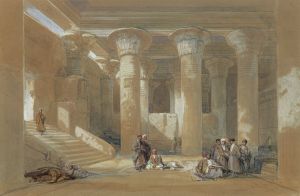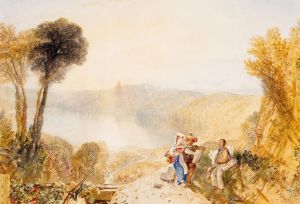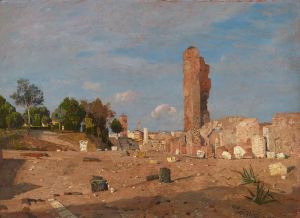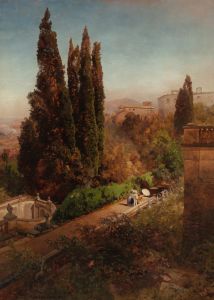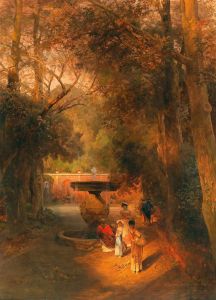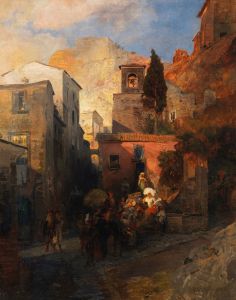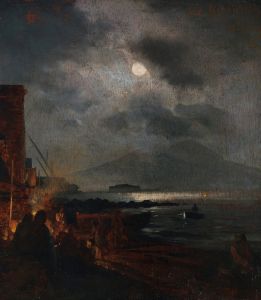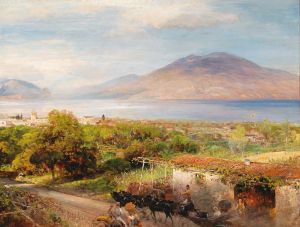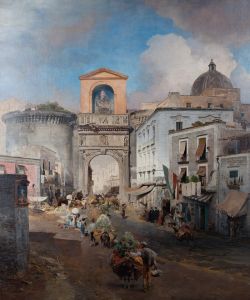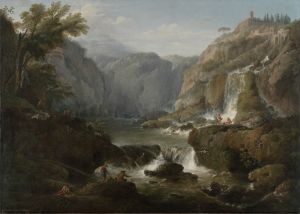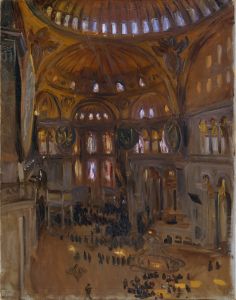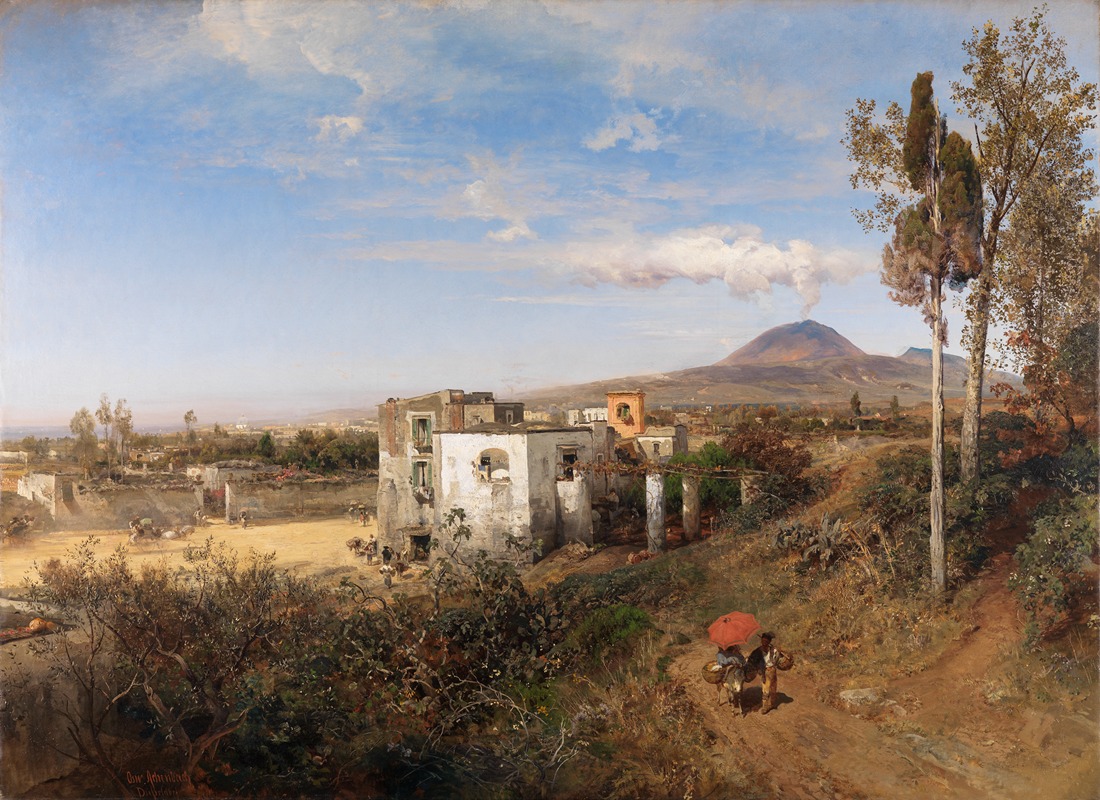
Landschaft bei Pompeji
A hand-painted replica of Oswald Achenbach’s masterpiece Landschaft bei Pompeji, meticulously crafted by professional artists to capture the true essence of the original. Each piece is created with museum-quality canvas and rare mineral pigments, carefully painted by experienced artists with delicate brushstrokes and rich, layered colors to perfectly recreate the texture of the original artwork. Unlike machine-printed reproductions, this hand-painted version brings the painting to life, infused with the artist’s emotions and skill in every stroke. Whether for personal collection or home decoration, it instantly elevates the artistic atmosphere of any space.
Oswald Achenbach, a prominent German landscape painter of the 19th century, is renowned for his vivid and atmospheric depictions of landscapes, particularly those of Italy. Among his notable works is "Landschaft bei Pompeji" (Landscape near Pompeii), which exemplifies his skill in capturing the essence of the Italian countryside with a focus on the historical and natural beauty surrounding the ancient city of Pompeii.
Born on February 2, 1827, in Düsseldorf, Oswald Achenbach was part of the Düsseldorf School of painting, a movement known for its detailed and realistic portrayal of landscapes and historical scenes. His brother, Andreas Achenbach, was also a distinguished painter, and together they were influential in the development of landscape painting in Germany.
"Landschaft bei Pompeji" reflects Achenbach's fascination with Italy, a country he visited frequently and which served as a significant source of inspiration throughout his career. The painting captures the serene and picturesque environment near Pompeii, a site of great historical significance due to the catastrophic eruption of Mount Vesuvius in AD 79, which buried the city under volcanic ash and preserved it for centuries.
Achenbach's work is characterized by its meticulous attention to detail and the use of light and shadow to create a sense of depth and atmosphere. In "Landschaft bei Pompeji," he employs a warm color palette to convey the Mediterranean climate and the lushness of the Italian landscape. The composition likely includes elements typical of his style, such as expansive skies, detailed foliage, and perhaps the distant silhouette of Mount Vesuvius, although specific details of the painting's composition are not widely documented.
Throughout his career, Achenbach was celebrated for his ability to evoke the mood and spirit of the places he painted. His landscapes often go beyond mere representation, capturing the emotional and cultural resonance of the scenes. This approach is evident in "Landschaft bei Pompeji," where the tranquil beauty of the landscape invites viewers to reflect on the historical and natural wonders of the region.
Oswald Achenbach's contributions to landscape painting were recognized during his lifetime, and he received numerous accolades and honors. He was a professor at the Düsseldorf Academy of Arts, where he influenced a new generation of artists. His works are held in high esteem and are part of collections in various museums and galleries around the world.
In summary, "Landschaft bei Pompeji" is a testament to Oswald Achenbach's mastery of landscape painting and his deep appreciation for the Italian scenery. Through his art, he not only depicted the physical beauty of the landscapes but also captured their historical and cultural significance, leaving a lasting legacy in the world of art.





